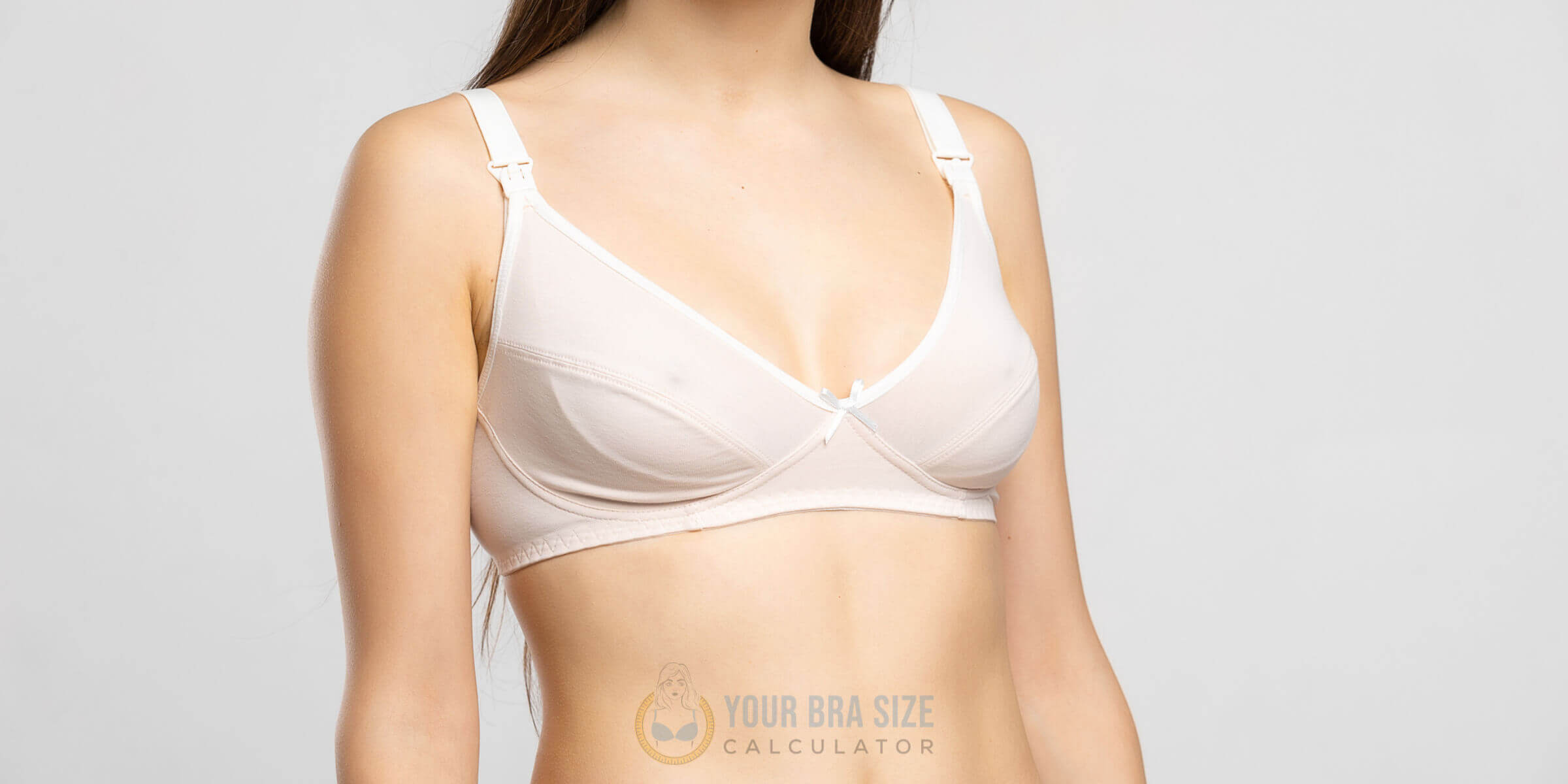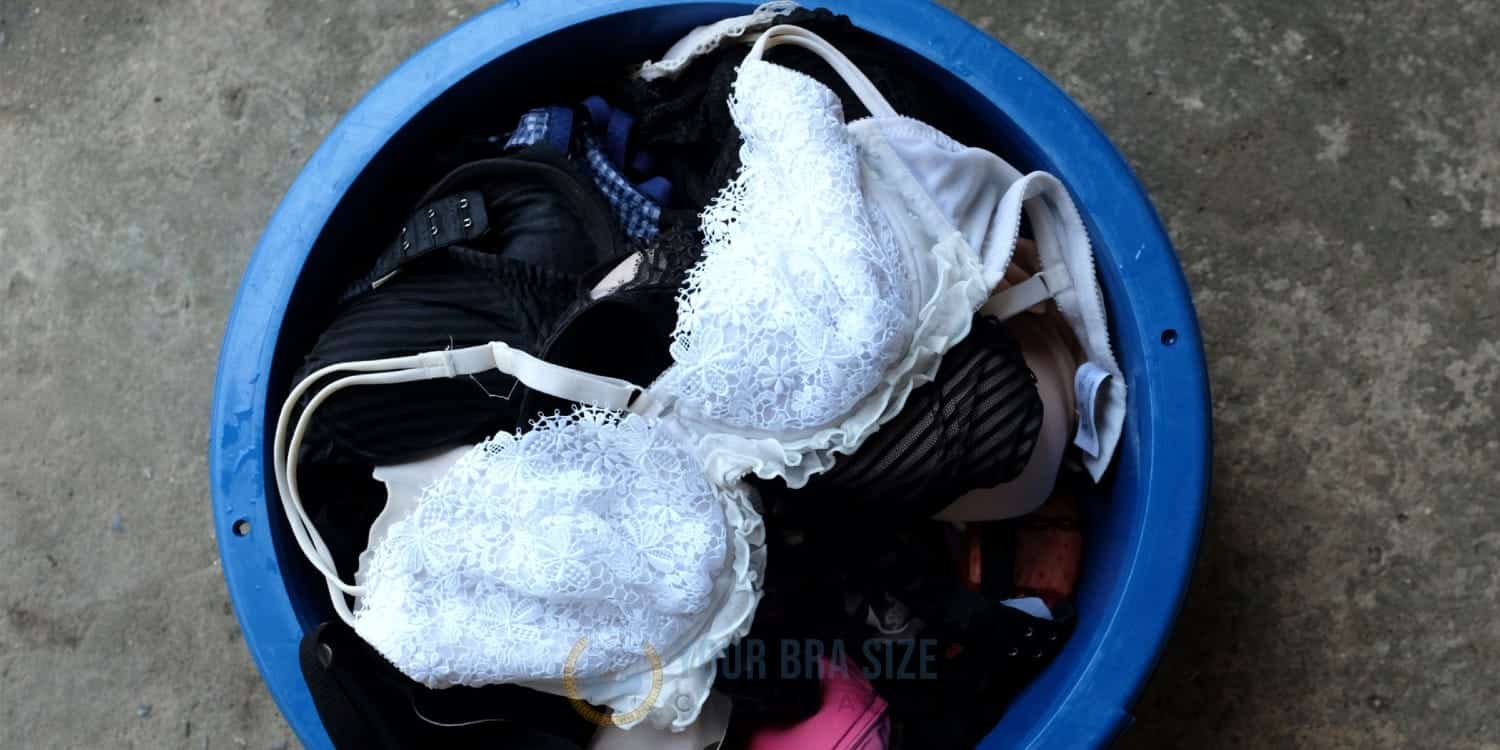When it comes to pregnancy, the last thing you want to worry about is an ill-fitting bra. Unfortunately, finding a comfortable and supportive nursing bra can be tricky for many expecting mothers. With changes in size and shape during pregnancy, ensuring your bras fit properly throughout the nine months is essential. But how do you measure yourself correctly? In this article, we will provide all the information you need on measuring a nursing bra during pregnancy so that you can find comfort and support when wearing lingerie no matter what stage of your journey. Let’s get started!
Pregnancy is one of the most exciting times in any woman’s life. You’re growing a little miracle inside of you – but with that comes some challenges. One of those challenges is ensuring your clothes fit comfortably, including your bras. Nursing bras especially require extra consideration due to their unique design features; they have more fabric and straps than regular bras, so they need extra precision when measuring them. It may seem like a daunting task but don’t worry! We’ve got everything covered here so that shopping for maternity lingerie becomes easier.
Every pregnant mother deserves beautiful lingerie pieces she feels comfortable in – and with our step-by-step guide on measuring for a nursing bra during pregnancy, you’ll be able to find just that! Our tips will ensure that whatever style or brand of lingerie you choose fits perfectly against your skin while providing enough coverage, support, and flexibility during such a fantastic time. Now let’s start measuring!

Understanding The Need For A Nursing Bra
It is essential to understand the need for a nursing bra during pregnancy. Nursing bras provide support and comfort for women breastfeeding after giving birth. Mothers can comfortably feed their babies without strain or pain in the chest area with the proper backing. Moreover, having the right nursing bra size can also help reduce backache for pregnant women due to its supportive structure.
When shopping for a nursing bra during pregnancy, choosing one with adjustable straps is essential to change them when your breasts become more significant as your body changes throughout your pregnancy journey. Furthermore, look for breathable fabrics such as cotton, which are gentle on the skin and prevent irritation while providing enough stretchability to accommodate your growing breasts.
Besides this, look for features like drop-down cups that give easy access when feeding time comes! These specific design elements make nursing bras an absolute must-have item during pregnancy. They provide much-needed comfort and ensure better convenience when breastfeeding afterward. Now that we understand why getting a nursing bra during pregnancy is necessary let’s move on to estimating your size.
Estimating Your Size
Measuring a nursing bra during pregnancy is essential to find the perfect fit. Knowing your size before you shop can save time, energy, and money. It’s critical to get the right fit for both comfort and support. Here are some tips on measuring a nursing bra size when expecting.
The first step is to use a sizing guide or chart that will help determine what size of nursing bra you should buy. Most bra sizes are based on chest circumference measurements under the bust and around the rib cage. You may also want to consider any changes in cup size since becoming pregnant, as they could affect your sizing needs. Once these measurements have been taken, it’s easy to look at a bra size chart and determine which corresponds with those numbers.
When measuring yourself for a nursing bra during pregnancy, ensure the tape measure is snug but not too tight against your body. This could lead to inaccurate results. Also, be aware of any soreness or tenderness while taking measurements so adjustments can be made if necessary. Lastly, remember to adjust straps and find comfortable closure settings; these components play an essential role in the nursing bra’s overall comfort level and proper fit.
By following these measuring tips, you’ll be well on your way to getting an accurate read on what size of nursing bra you need during pregnancy. Now that you know your size, it’s time to start looking into different styles available and choose one that fits physically and aesthetically too!
Choosing The Right Style Of Nursing Bra
Once you have established your size, it’s time to choose the right nursing bra style. Maternity and nursing lingerie comes in various types for comfort and convenience during breastfeeding. Some popular options include full-coverage bras, sports bras, front-closure bras, racerback bras, sleep bras, and seamless underwire bras.
Full-coverage nursing bras provide support without compromising cup capacity or versatility. They often feature adjustable straps and removable cups that can be folded down when feeding is needed. Sports bras are designed with extra padding and reinforced bands to offer additional support while allowing easy access when breastfeeding begins. Front-closure maternity lingerie comes with clips at the center. Accessing breast tissue is quick and simple; they may even have an elastic band below the bust for more support. Racerback pregnancy bras provide maximum lift and separation, which helps keep breasts more secure throughout the day. Sleep Bras are soft cotton fabric perfect for nighttime feedings and lounging around the home during the day. Seamless underwire bras offer great shape without sacrificing comfort; however, many women opt out of this choice due to potential discomfort from pressure caused by wires against sensitive areas on their bodies.
When choosing your nursing bra, you should look for features such as breathable material, wide shoulder straps, adjustable back straps, and multiple hooks for added flexibility over changing sizes during pregnancy – all these will help ensure optimum fit and comfort before testing its wearability!
Testing The Fit Of Your Nursing Bra
Testing the fit of your nursing bra during pregnancy is critical for comfort and support. From testing the size to trying on different sizes, it’s essential to make sure you have the best-fitting bra for this particular stage in life.
First, test the size by measuring around your rib cage directly under your bust with a flexible tape measure. This should be done while wearing a non-padded everyday bra that fits comfortably so as not to interfere with getting an accurate measurement. Record this number to determine what band size you need when shopping for a nursing bra.
Next, measure around the fullest part of your chest or bust area. To get this exact measurement, consider any extra fullness due to pregnancy hormones and ensure that no matter how much fluctuation occurs throughout your pregnancy, you can still move freely without feeling overly restricted by tight fabric or binding straps. Once you have gathered these measurements, compare them against those found on standard sizing charts from retailers specializing in maternity lingerie and apparel.
Finally, armed with this information, try on several bras and assess their physical fit and level of comfort. Ensure adequate space between each cup and breast tissue, yet check that they provide ample coverage over the entire breast area sans spilling out at sides or top edges – especially if breastfeeding has already begun! Proper assessment of one’s body shape combined with taking accurate measurements before purchasing can help guarantee to find the perfect nursing bra during pregnancy every time. Now let’s look at adjusting the straps and fastenings.
Adjusting The Straps And Fastenings
Adjusting the straps and fastenings on your nursing bra is essential in finding the best fit. Here are some tips to help ensure your comfort:
Adjusting Straps:
- Make sure that when adjusting the straps, they fit comfortably but securely against your body.
- Be mindful of how tight or lose you make them, as too tight can constrict while too loose may not provide adequate support.
- Always adjust both sides at once so they stay even.
Fastening Adjuster:
- If possible, use a fastener adjuster to customize the fastening size around your chest area. This will help create a more snug yet comfortable fit without having to readjust each time.
- The adjuster should accommodate four to five inches of adjustment depending on design and style.
Straps and Fastenings:
- When wearing your nursing bra, ensure all strap adjustments and fastenings are secure before proceeding with any activities or movements.
- You want these components to remain adjustable throughout pregnancy since many women’s breast sizes change over time during this stage.
Knowing when to replace your nursing bra is as essential as adequately fitting one now – something we’ll cover in our next section!
Knowing When To Replace Your Nursing Bra
When it comes to nursing bras, knowing when to replace them is as important as finding the right fit. Nursing bras often have a shorter lifespan than regular bras due to wear and tear during breastfeeding. The time you can expect your nursing bra to last will depend on how frequently you use it and how well cared for it is.
It’s wise always to purchase at least two new nursing bras every pregnancy to have one ready if needed. If you’re still wearing your current nursing bra after giving birth, check regularly for wear and tear, such as stretched fabric or broken fastenings. It’s also a good idea to note any changes in size or comfort level throughout each day, as these are indicators that your bra may need replacing sooner rather than later.
To ensure maximum support and comfort while breastfeeding, it’s best practice to replace your nursing bra every three months or when noticeable signs of deterioration occur. This ensures you’ll get the most out of your investment in quality maternity lingerie.
Conclusion
In conclusion, it’s essential to understand the need for a nursing bra during pregnancy and beyond. Taking time to measure your size correctly and choosing the right nursing bra style can make all the difference in comfort and support when breastfeeding. It’s also essential to test the fit of your nursing bra before wearing it and adjust straps and fastenings if necessary. And lastly, keep in mind that you may have to replace your nursing bras more often than regular bras due to wear and tear – research shows 86% of women buy at least one new nursing bra every six months!
Taking care of yourself is vital when expecting or caring for a baby. Investing in quality maternity lingerie, such as a supportive, comfortable nursing bra, will ensure I can adequately meet my needs while tending to my child’s needs. This article helps other moms feel confident about choosing their ideal maternity undergarments.








